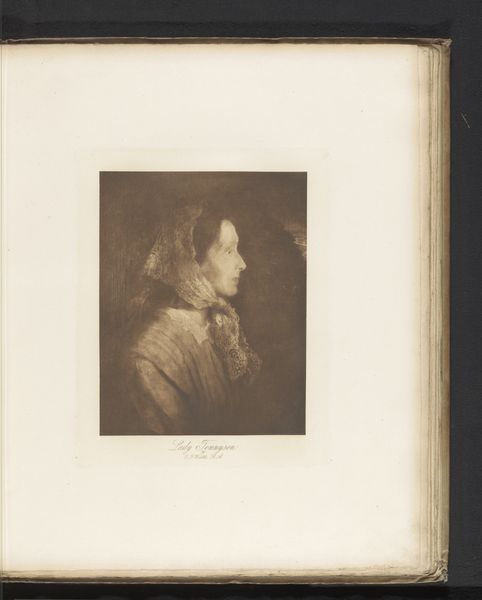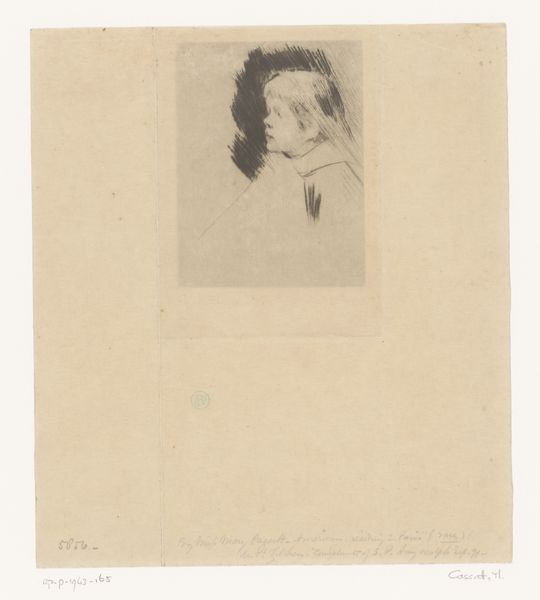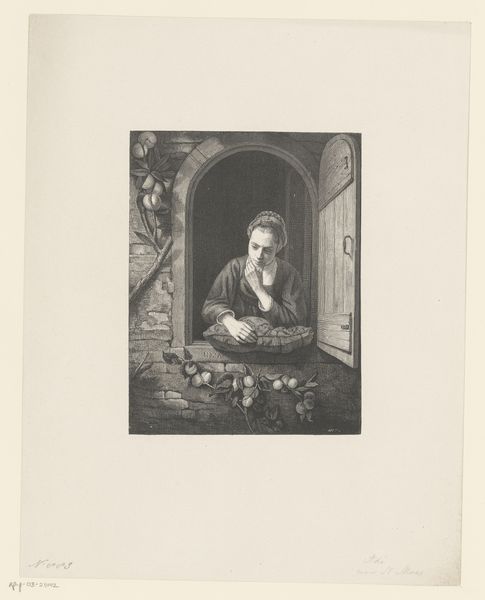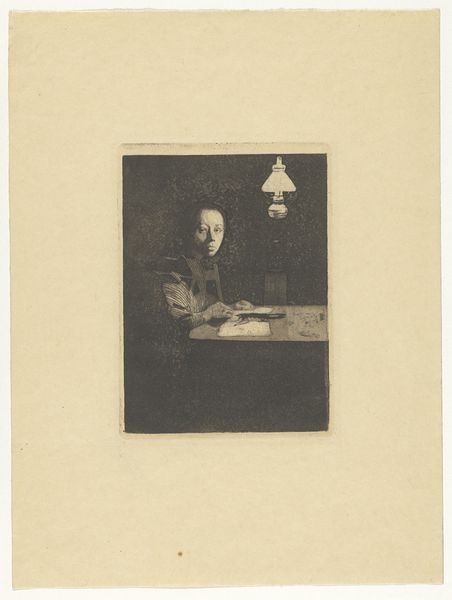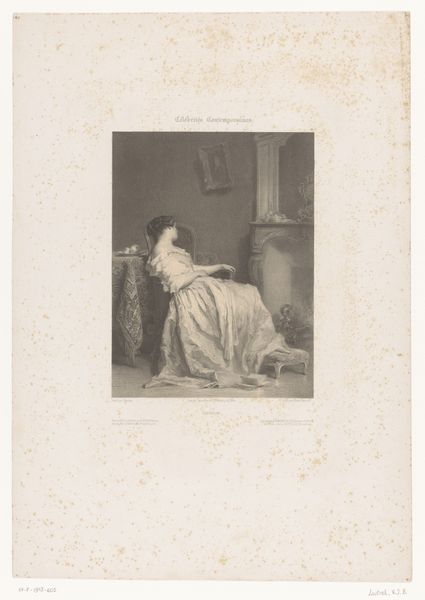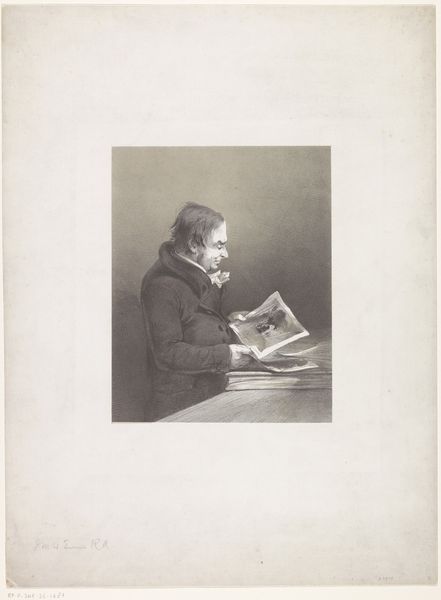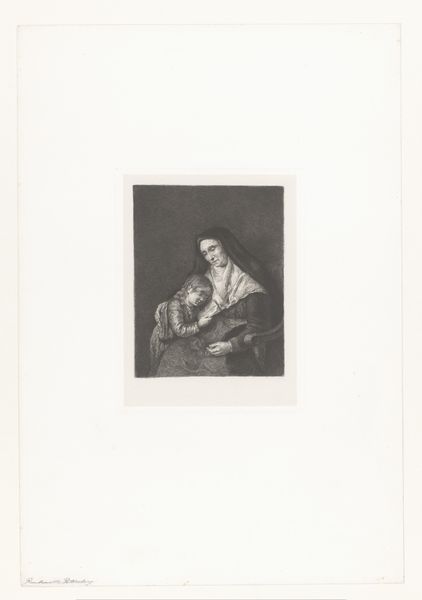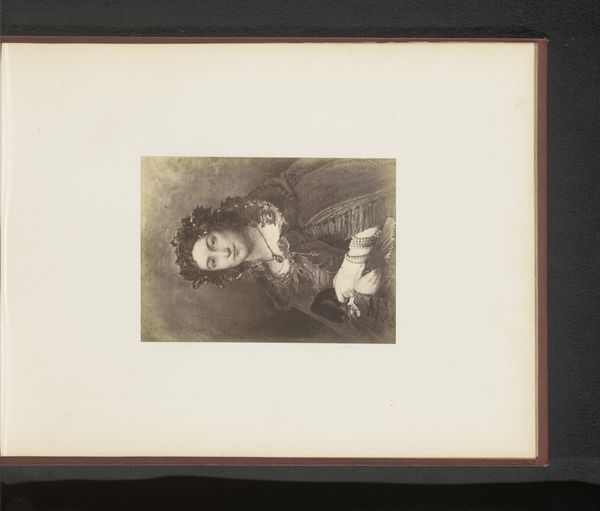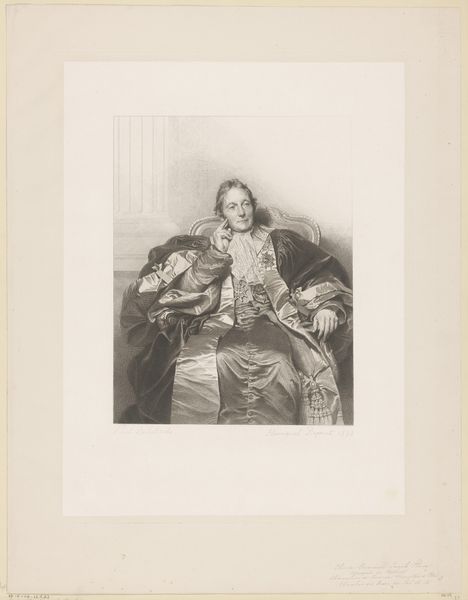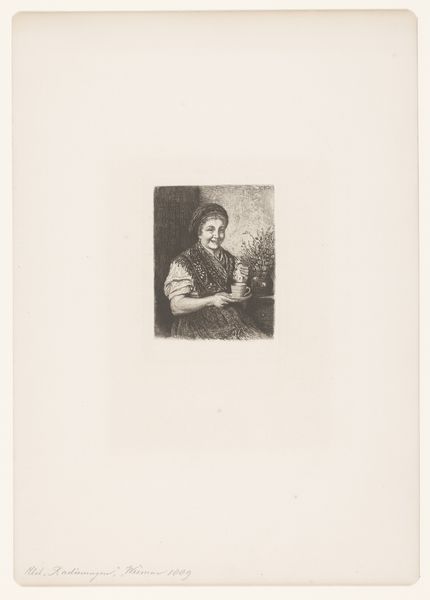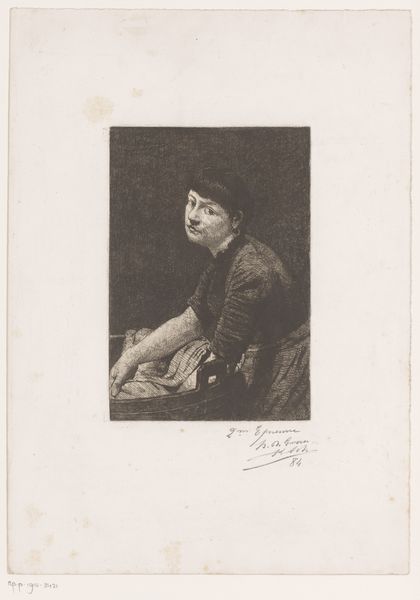
drawing, print, woodcut, wood-engraving
#
portrait
#
drawing
#
yellowing background
#
natural tone
# print
#
figuration
#
pencil drawing
#
woodcut
#
united-states
#
wood-engraving
Dimensions: 5 7/16 x 4 7/16 in. (13.81 x 11.27 cm) (image)12 x 9 5/8 in. (30.48 x 24.45 cm) (sheet)
Copyright: Public Domain
Curator: This is William B. Closson's "Boy with Squirrel," a wood-engraving dating from the 19th century. It’s currently in the collection of the Minneapolis Institute of Art. Editor: It's interesting—my immediate impression is one of quiet concentration. The textures feel meticulously rendered; the tiny details of the squirrel’s fur and the boy's delicate features have such texture. Curator: Absolutely, Closson's technique is masterful. He was working within a tradition of reproductive engraving that saw prints playing an increasingly important role in disseminating imagery and knowledge to a broad public. The availability of images in a growing marketplace mattered. Editor: That's key. What kind of wood would be suitable to accomplish such detail? Is there a particular hardness required to allow such precision when carving the fine lines for texture? This piece demands consideration of what is lost and found between image and the object that spawned its making. Curator: That speaks to the socio-political function too; disseminating art beyond the elites, making imagery more democratically available to a public eager for education and visual stimulation. Prints changed who could access "art". Editor: That's a powerful point about democratizing visual culture through reproducible forms! But it still needs the craftsman, the engraver and woodcarver shaping those politics through the act of its physical construction and how accessible the medium is to makers too. What were the dominant modes of distribution? Were artists making a sustainable living wage from printmaking at this time? Curator: Broadsides were a start, then periodicals and books. Consider what access printmaking might have afforded to emerging art institutions and to the cultural values circulating with increasing speed in this time of growing capitalist culture. What role did imagery play in shaping the social sphere? Editor: Agreed, we must never separate technique from that socio-historical analysis because materials and distribution both structure what can be depicted. What seems like simple imagery might mask significant value when one investigates the materials it took to realize, the social structures supporting it, and the many viewers who felt compelled enough to pause before it and reflect upon that young boy and his woodland companion. Curator: Indeed, something as humble as a print offers insights into 19th-century society’s values and means of communication and, just as importantly, the mechanics of its materials.
Comments
No comments
Be the first to comment and join the conversation on the ultimate creative platform.
